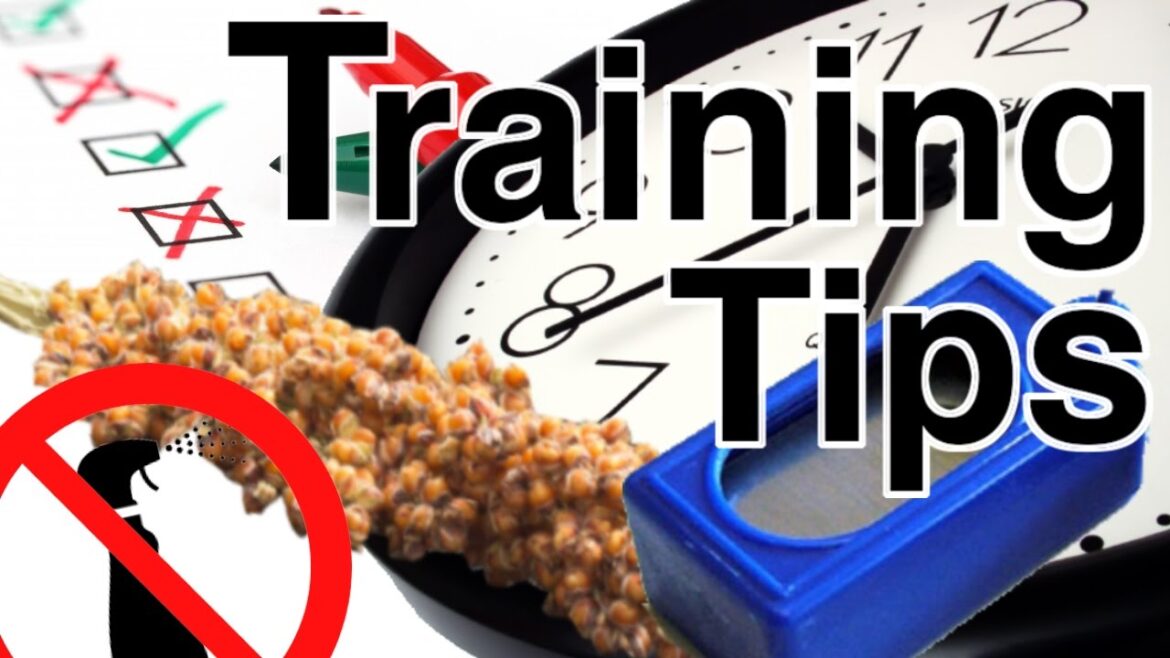
Training you parrotlet
So what tricks can parrotlets learn?… Here are 20 great examples in this awesome video from Flock Talk …
We bet you can’t wait to see these tricks performed for you. Well, with patience these are all possible! It’s worth pointing out though that training a parrotlet takes time and patience. By always moving GRADUALLY through the training process and never stressing the bird with forced steps, the all-important parrotlet/owner trust remains intact. ALWAYS observing this patience is crucial for the training to progress.Small amounts of training often is best if you wish to continually progress.
Parrotlets are individuals and their willingness/ability to learn may vary, however when engaged, they are very intelligent and willing learners.To start, begin by talking to your parrotlet in a voice like you would use to read a small children’s story. Then, once he or she is comfortable in your presence, entice your parrotlet to the cage side with treats. Eventually, you may wish to entice him or her to step out of their cage into a bird safe space.
You may wish to speak to your avian veterinarian regarding a light wing clip if the bird has reached at least 10 weeks of age. This is a painless process that achieves three things:
- your parrotlet will no longer achieve dangerously high speeds in enclosed living spaces, thereby minimising collision risk
- any potential accidental release will be more easily resolved, however the parrotlet may fly away (slowly) if unnoticed
- your parrotlet will be more likely to interact and bond with you (although this should still be a GRADUAL process of trust building)
After a few months (and then 1-2 times each year) when your parrotlet moults, new full length flight feathers will replace the clipped ones. To retain clipped wings, see your avian veterinarian for a new clip.
Alternatively, you may wish to do some training such as recall/stationing or laps. Or you may have a familiar bird safe space where the bird can fly without becoming frightened by anything. In this case, you might want to let the new flight feathers grow.
Keep in mind though: there is still some risk of collision or injury in enclosed spaces if your parrotlet is spooked, or in a unfamiliar or unsafe area. Please see the article on Bird Safe Space for further important information.
Once your parrotlet is out of the cage in a familiar bird safe space, ensure you are practising ‘stepping up’ often and repeatedly so your parrotlet will step up when needed.
Young parrotlets are known to playfully bite their owner’s fingers a little too hard. This occurs especially when they are excited, with new people, or if they lack chewing enrichment items. Young parrotlets usually require reinforcement of the ‘gentle beak’ training technique as soon as possible whilst in early training. A quick fix is to wet your fingers first and your parrotlet should go easier on you.
To explore the best methods to train your bird, we recommend the YouTube channel ‘Flock Talk’. A good start would be to find out the basics of conducting successful parrotlet training…
Once you get started training your parrotlet, sharing your experiences and learning from others will make it all the much more enjoyable. A couple of Facebook groups of companion parrotlet owners that are highly active and supportive are found HERE and HERE.
Good luck with the highly rewarding art of training!




